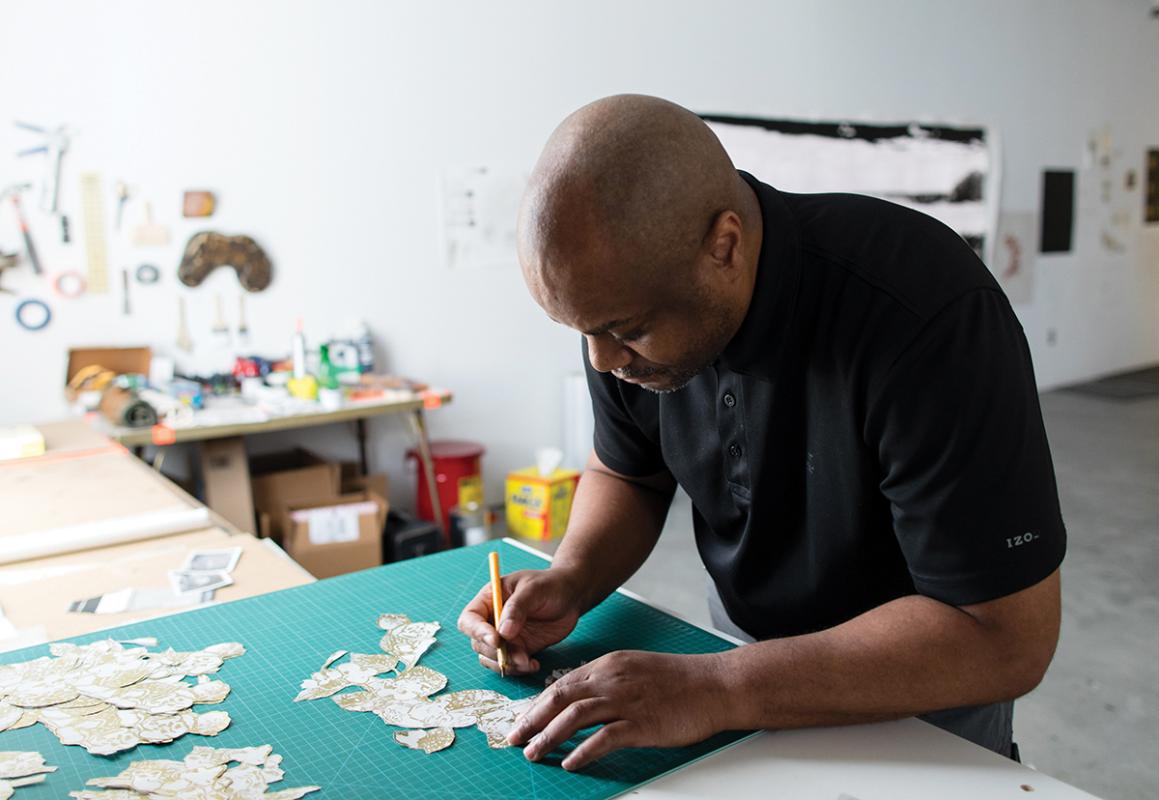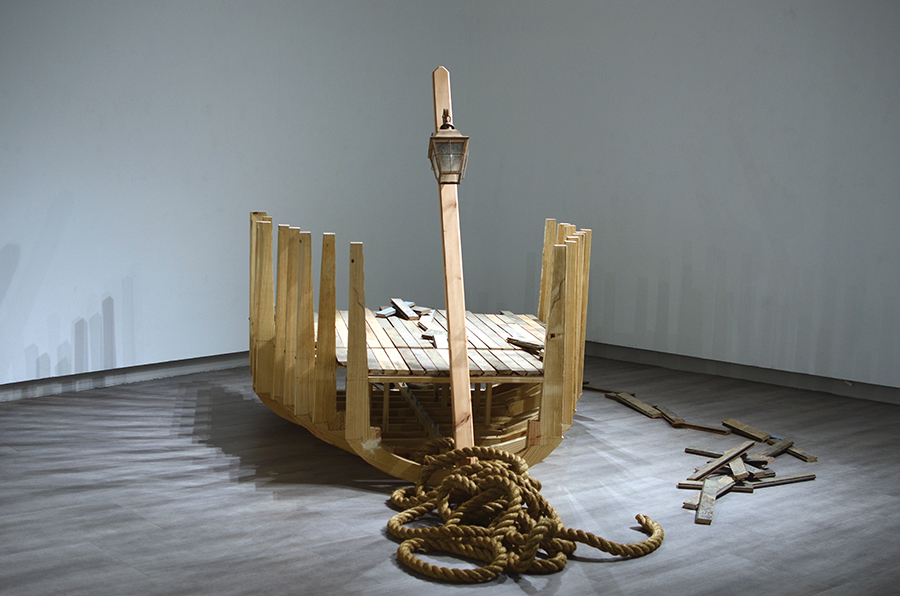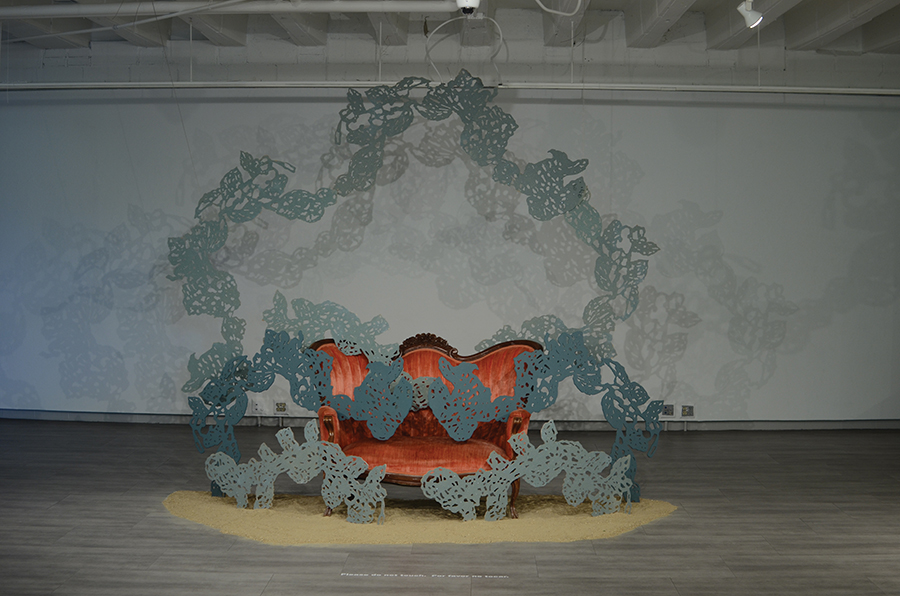Exploring Loss, Memory, and Constructed Narratives
By Ian Weaver

Ian Weaver, an associate professor of art at Saint Mary’s College, is a nationally exhibited artist whose work has appeared at venues like the Saint Louis Art Museum, The Chicago Cultural Center, and Fort Worth Contemporary Arts. Weaver’s numerous residencies include the Bemis Center for Contemporary Arts, Ox-Bow, and the International Studio and Curatorial Program in New York. Among his many accolades are the DeHaan Artists of Distinction Award and the Stone and DeGuire Contemporary Art Award. In this reflection, Weaver discusses his latest project, an installation set for display at the Chicago Athletic Association in 2026.
My artistic practice is informed by themes of history, memory, and mythology, and illuminated by the disciplines of anthropology and ethnography. At the heart of my work is an exploration of how communities and individuals construct their identities through fractured histories and personal narratives. This idea of a constructed narrative—where histories are reimagined, and even invented—serves as a foundational element of my work.
Since 2008, much of my focus has been on the communities of the Near West Side of Chicago, particularly the “Black Bottom” area. This vibrant Black community was leveled during the 1950s and 1960s as a result of urban renewal projects, leading to the destruction of much of its material history. From this point of loss, I’ve developed a project that reimagines the community’s lost history, creating a symbolic narrative around a fictional group I call the Black Knights.

#052522-D, 2022

The Black Knights are a product of my merging interests in medieval heraldry and Black activism. I envision them as a force of resistance and empowerment, fighting for survival amid displacement. While inspired by a specific historical moment, the project speaks to larger themes of how we, as individuals and communities, construct lost histories and create new identities in response to trauma and erasure. This ongoing project is a meditation on how history—especially lost history—can be re-imagined as a form of survival.
"My artistic practice is informed by themes of history, memory, and mythology, and illuminated by the disciplines of anthropology and ethnography"
- Ian Weaver
Film and the Art of Fracture

Central to my artistic process is the idea of fracture, which I express through collage in multiple formats: drawing, printmaking, sculpture, installation, and film. Collage, for me, is a metaphor for how we piece together our lives and identities from fragments of memory and history. In the same way we assemble commemorations and artifacts, we construct our own narratives from disparate and fractured experiences.
Film, in particular, has become an important medium for my exploration of fractured memory. Inspired by filmmakers like Tacita Dean and Kevin Jerome Everson, I have worked with both found and shot 16-mm film, creating collage-like works that combine archival footage with newly created material. My interest in film began in 2014 when I created an experimental film solely from found 16-mm footage. In recent years, however, I’ve begun shooting my own film using a Russian wind-up camera, adding a personal element to this process. More recently, I’ve been drawn to the metaphorical power of water, particularly the Chicago shoreline of Lake Michigan. Through this lens, I have begun to explore the historical and symbolic connections between water and Black bodies—both in terms of forced migration and voluntary movement. The shoreline becomes a site for reflecting on these themes, allowing me to extend the ideas of my Black Bottom project into a broader context.
The Chicago Athletic Association: A Space Reclaimed
In 2026, I will have the opportunity to expand this exploration in a new installation at the Chicago Athletic Association, a historic building that first opened its doors in 1893 during the World’s Fair. Initially, the Athletic Association was a space of leisure, reserved for Chicago’s white male elite. After years of closure, the building has been transformed into a hotel and exhibition space. One of its most iconic areas is the former pool, known as “The Tank,” which now serves as a temporary exhibition venue.
Public pools, historically, have been spaces of exclusion for Black and Brown individuals, making this an especially poignant setting for my work. My installation, tentatively titled Fractured Waters, will incorporate both sculptures and a new collaged film that draws from found 16-mm archival footage and new footage I will shoot. This project is an opportunity to connect and expand the themes of water, exclusion, and Black identity that I’ve been exploring over the years and to reflect on how spaces of exclusion can be reclaimed and reimagined.
Reimagining Memory Through Art

At its core, my work is an attempt to reconcile the tension between loss and constructed narratives. Through the lens of history, memory, community, and identity, I am interested in how we reclaim what has been taken from us—whether it’s a community erased by urban renewal or a personal history fractured by time and memory. Art, for me, is a process of reimagining those histories and creating new, empowering narratives. This is very good.
This upcoming installation at the Chicago Athletic Association will serve as another chapter in this exploration, one that continues to ask how we—both individually and collectively—reimagine our past to build our future.
